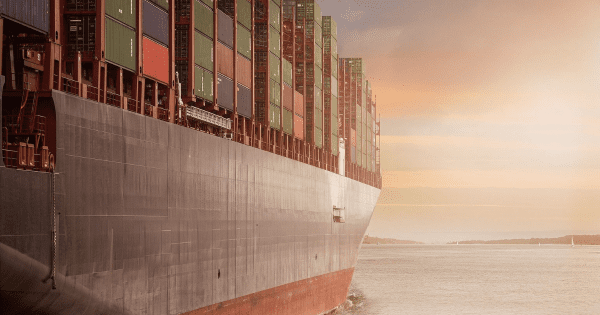Sustainable Sailing: 3 Need-to-Know Ocean Cargo Shipping Tips

A great majority of the world’s trading is conducted at sea. Unlike air and road cargo transportation, ocean cargo shipping offers the flexibility of sending small, large, perishable, and hazardous materials, quickly and safely, at an affordable cost.
You may be surprised to find that this method is the greenest way of transporting different types of freight over large distances. Across the globe, distributors and freight forwarders are switching to ocean cargo shipping, citing timelier shipments delivered in record time with fewer stops.
A market mindset shift centered on sustainability sends more cargo companies leaning into eco-friendly methods of forwarding and shipping freight each day.
Freight shipping industries are continually changing to find new ways to be more kind to the environment. Modern freight forwarders should know and understand these three efficient ways to build an eco-friendly ocean cargo shipping plan:
- Ship using recyclable and biodegradable freight packaging materials.
- Lighten the cargo load to lower fuel emissions on lengthy trips.
- Audit your logistical plan to find room for sustainability improvements.
Keep reading to recognize how Miami shipping cargo professionals supplement their hard work at sea with sustainable shipping methods and learn how you can do the same.
Use Biodegradable Types of Freight Packaging Materials
Take styrofoam packing peanuts out of your logistical plan and switch to recyclable shipping materials. Though packing peanuts may be economical, they’re also harmful to the environment and contribute to massive amounts of manufacturing waste.
Mushroom packaging, an eco-friendly, biodegradable substitute, is 100% renewable and formed by agricultural compost. Plant-based packing peanuts are another effective sustainable option.
If you can’t rid yourself of the foam packing peanuts for good, know that they’re recyclable. If there’s something you can re-use, try to filter it back into your network. For example, you might opt to recycle boxes that are in good condition to use as repackaging for another shipment.
Lighten the Cargo Load on International Shipping Transports
Keeping cargo loads as lightweight as possible saves money and time with quicker transports. Stay light where you can. When it’s not possible, commit to shipping a greater percentage of full containers for fewer shipments.
Here are four pro-tips you can use to conserve fuel and lighten the load:
- Fold, deflate, and disassemble boxed products to save room.
- Use simple packaging. Avoid any extra materials that will add weight, volume, and cost.
- Commit to shipping full container loads (FCLs) more frequently. Fewer ocean cargo shipping trips extend to fewer fuel emissions.
- Choose plastic pallets over wood. Wood block pallets are much heavier than their plastic competitors, so switching over will drastically reduce cargo weight.
Maintain Your Freight Logistics Plan with Eco-Friendly Updates
Take a comprehensive look at your current freight logistics plan and find spots to improve your eco-friendliness. In the warehouse, consider installing energy-saving LED lightbulbs or investing in rooftop solar panels that sustainably power your working and storage spaces.
You may overhaul your transports by implementing ocean cargo shipping weight reductions and changes to your pallet or packing materials. Measure your carbon footprint and rework improvement areas.
Wrapping It Up
Sea freight shipping’s flexibility sets this method far above any other freight transport option. Freight forwarders gain cost- and time-savings from shipping with these vessels like no other. Check your carbon footprint and put together an environmentally friendly ocean cargo shipping logistical plan that’ll give back to the sea.
